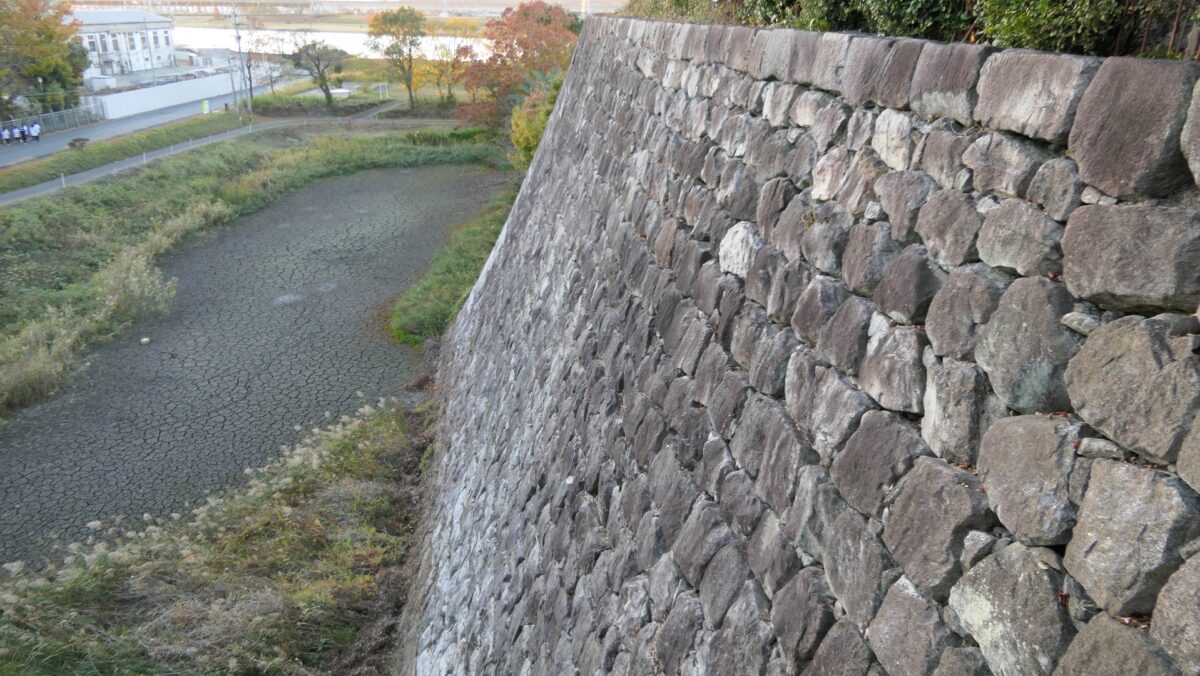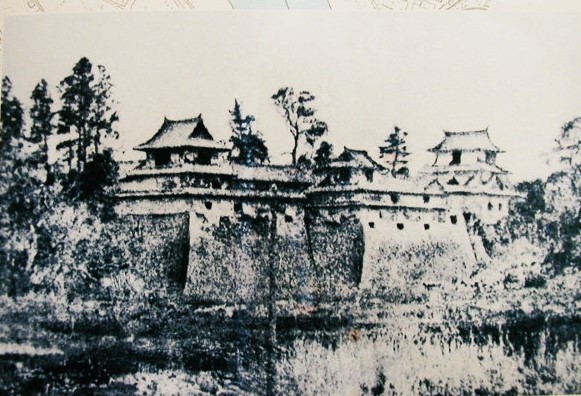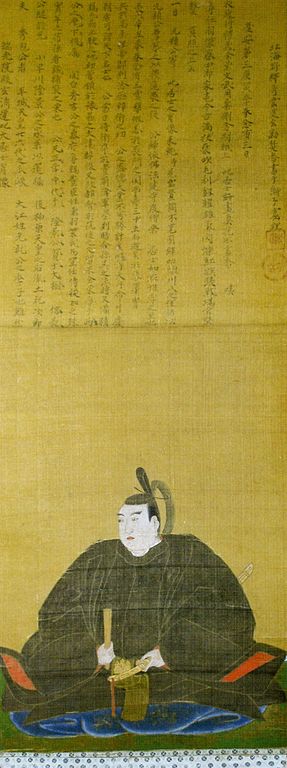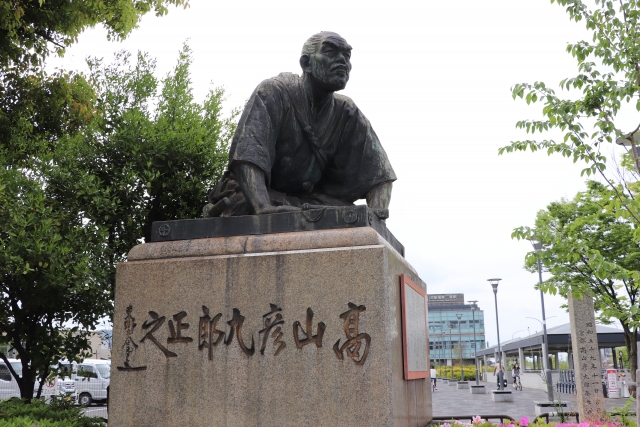Features
Great Stone Walls of Main Enclosure
Today, only the Main Enclosure remains as the ruins of Kurume Castle. The ruins have no castle buildings, but its stone walls are still mostly intact. The scale of the enclosure is not so large, about 150m from north to south and about 100m from east to west. It is surprising to imagine there were seven three-story turrets all connected by two-story row-style turrets in such a limited space. There is the Sasayama Shrine which worships the Arima Clan in the enclosure.
The map around the castle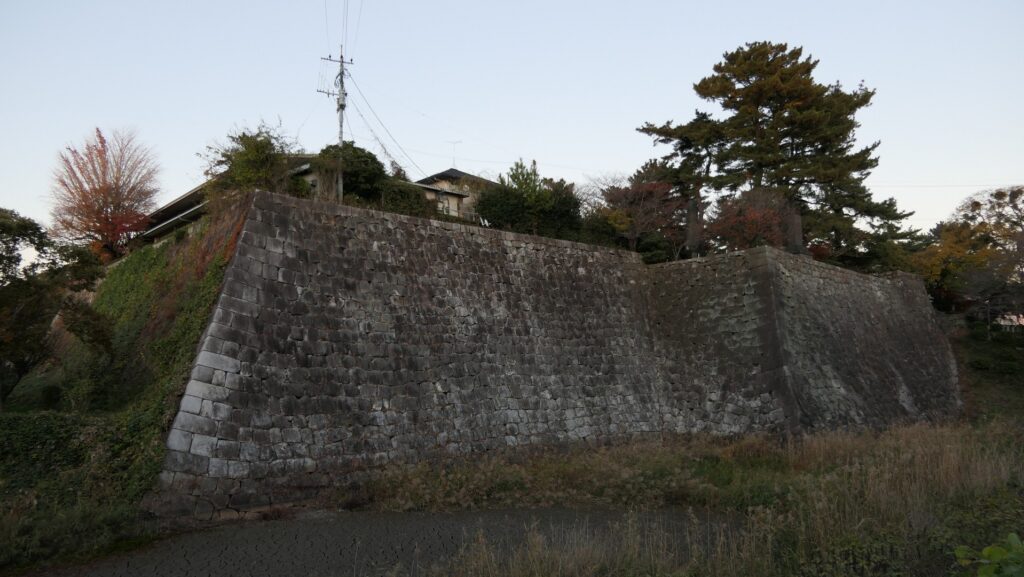
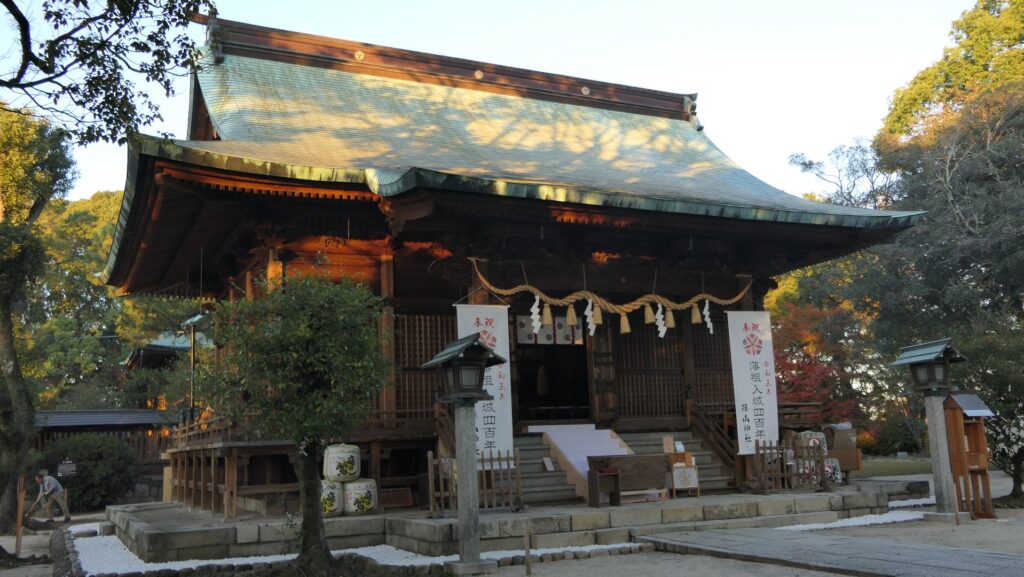
Newer Stone Walls of Southern side
The front side of the enclosure is facing the south, which is also the entrance of the shrine. The only remaining water moat is located on that side. You can see the great high stone walls with a height of 15m. The stone walls of this side are constituted of piled, aligned square cut stones, in a method called Nuno-zumi. This method is newer than the one used in the rest of the castle, so it is thought that they were built by the Arima Clan.


The three three-story turrets; Tatsumi(Southeast), Taiko(Drum) and Hitsujisaru(Southwest) Turrets used to stand on the stone walls. In particular, the Tatsumi Turret was the largest, which meant it was the symbol and the substitute of the Main Tower of the castle.
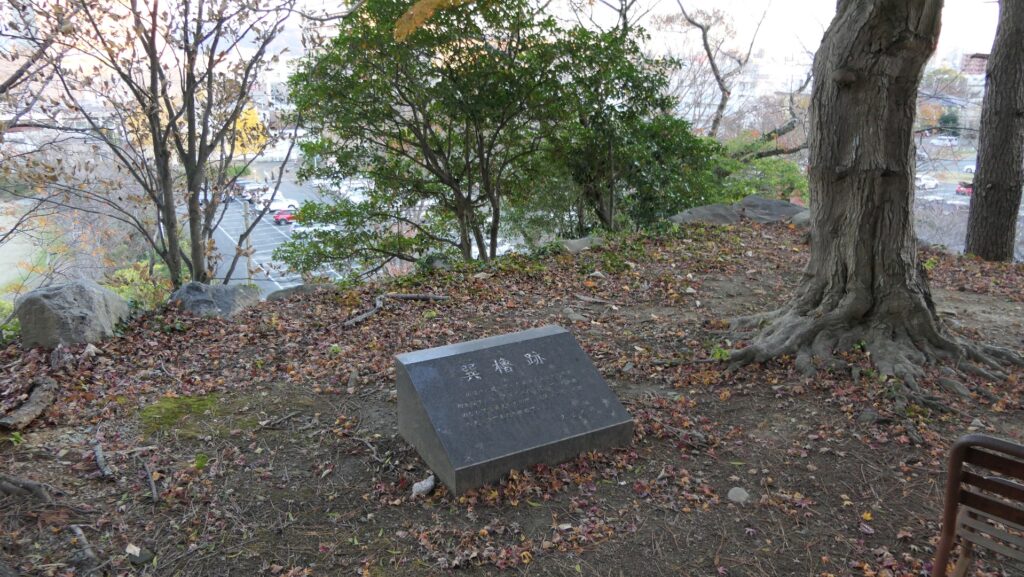
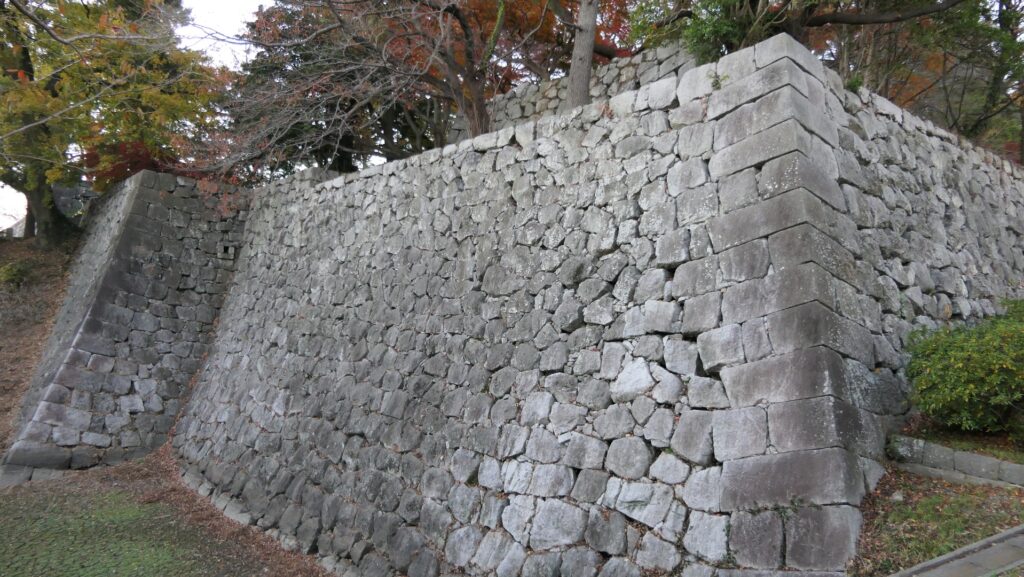
Inside of Main Enclosure
You can enter the enclosure through the ruins of the Kabuki-gomon Gate, on the paved route turning left. The route used to pass by a defensive square space called Masugata, but it is not visible clearly since the route was paved.
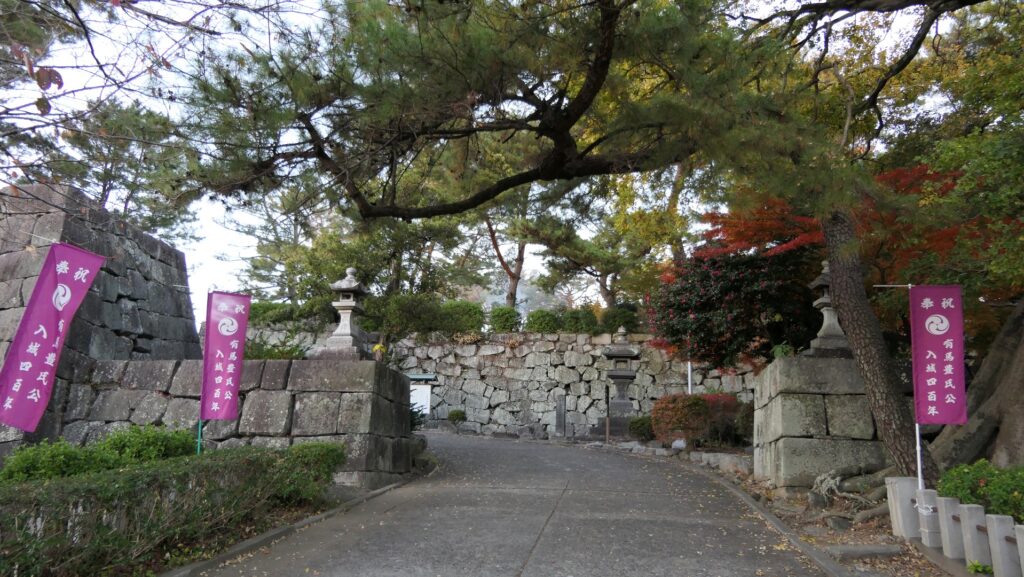
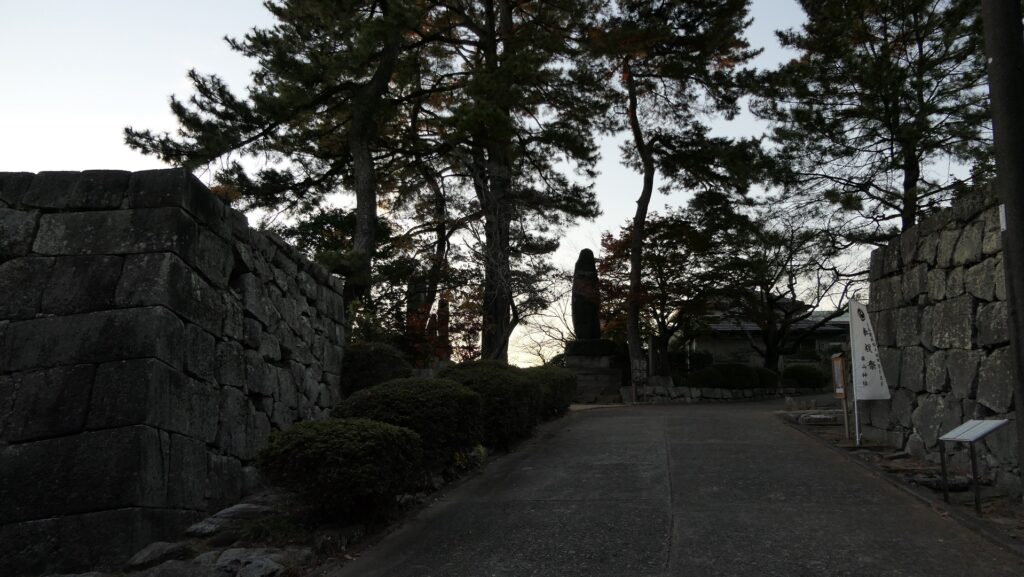
In the enclosure, there is the Arima Memorial Museum which exhibits the legacy of the Arima Clan, which the Sasayama Shrine isn’t a part of. The museum is on the ruins of the Hitsujisatu and Nishishita(West) Turrets. On or beside the ruins of the other turrets, there are several monuments about the local history. For example, there is the monument for remembering the sufferers of the incident in 1871 on the ruins of the Taiko Turret, where you can see its great stone walls close nearby.
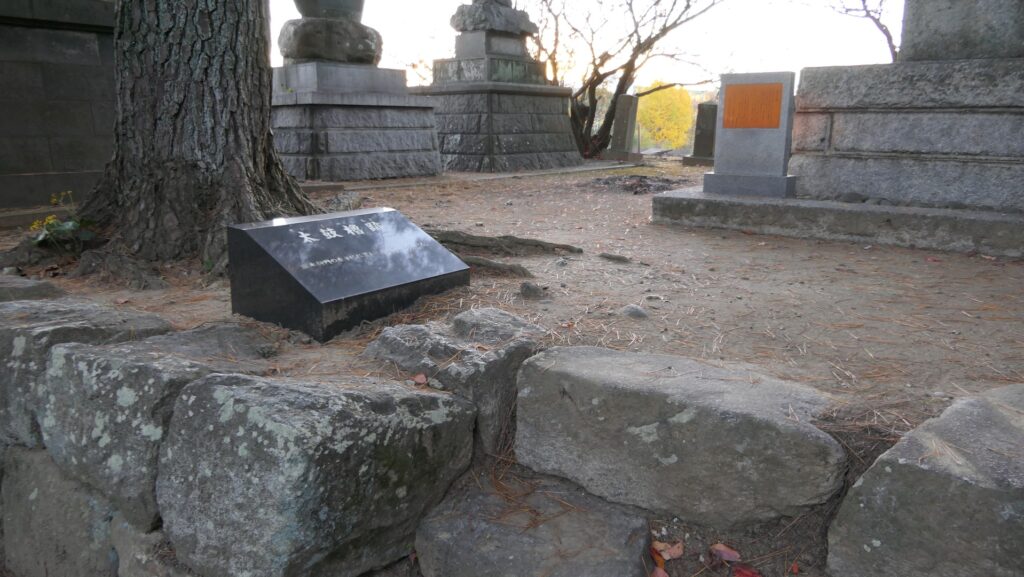
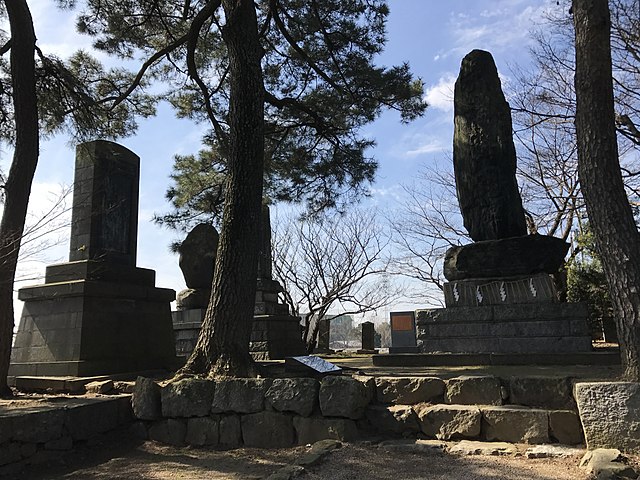

There is also the monument for the 56th Infantry Regiment of the Japanese Army beside the ruins of the Ushitora(Northeast) Turret, where you can see the Chikugo River.


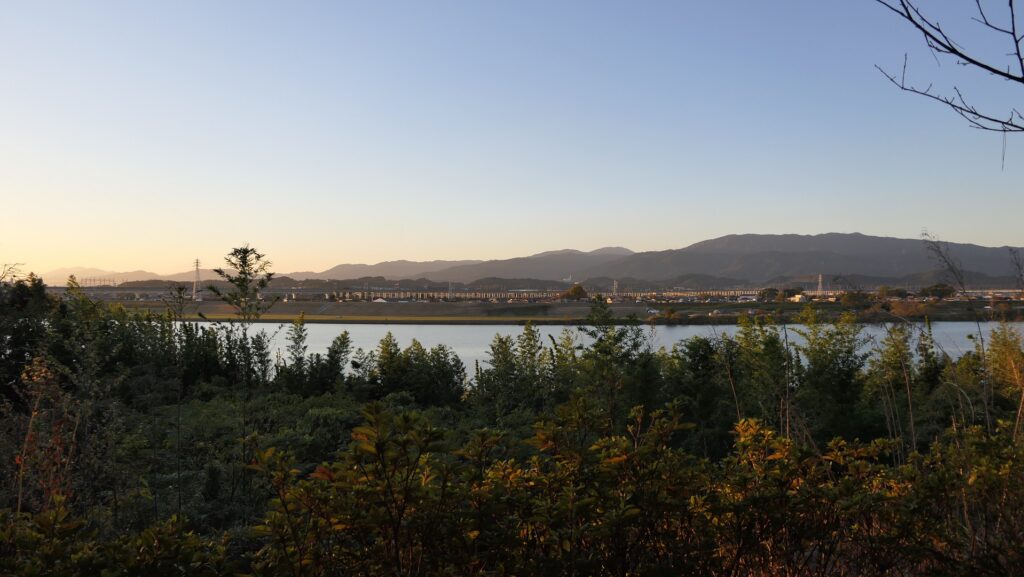
The Older Stone Walls of Eastern side
You can also enjoy a great view of the stone walls at the eastern side of the enclosure. The surface of the stone walls is made of piled roughly processed stones with small stones filling the gaps. This method is called Uchikomi-hagi. On the other hand, their corners are made of piled processed rectangular stones alternately, following the method called Sangi-zumi. These methods are older than the one used at the southern side, so these stone walls might have been built by the Mori or Tanaka Clans.


There is another entrance with stone steps on this side, beside the ruins of the Tsukimi(Moon watching) Turret. It might had also been the front gate as this side had originally been the front side of the enclosure. You can see the Kurume University playground from the turret ruins, which was once a water moat of the castle.
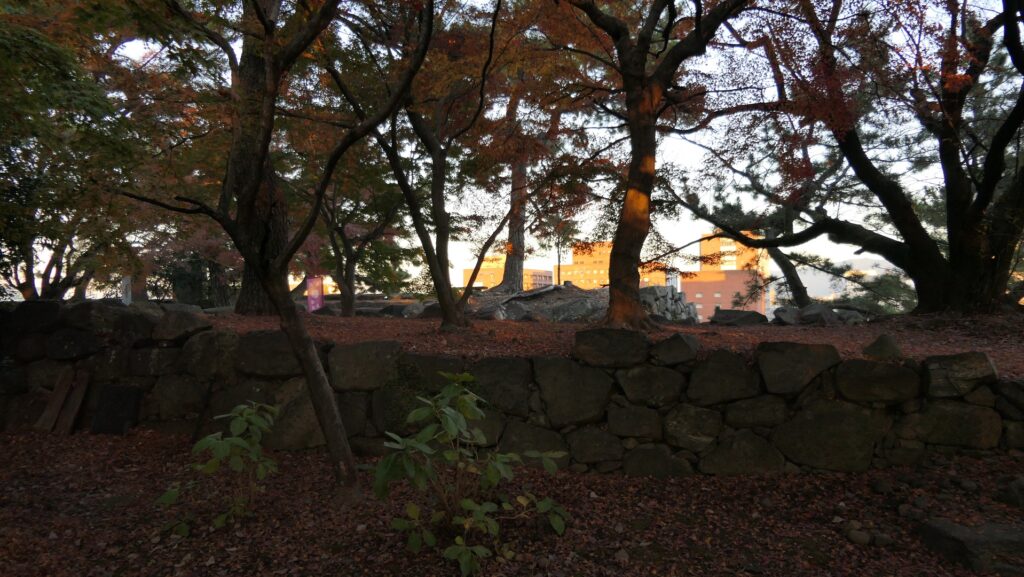


To be continued in “Kurume Castle Part3”
Back to “Kurume Castle Part1”

